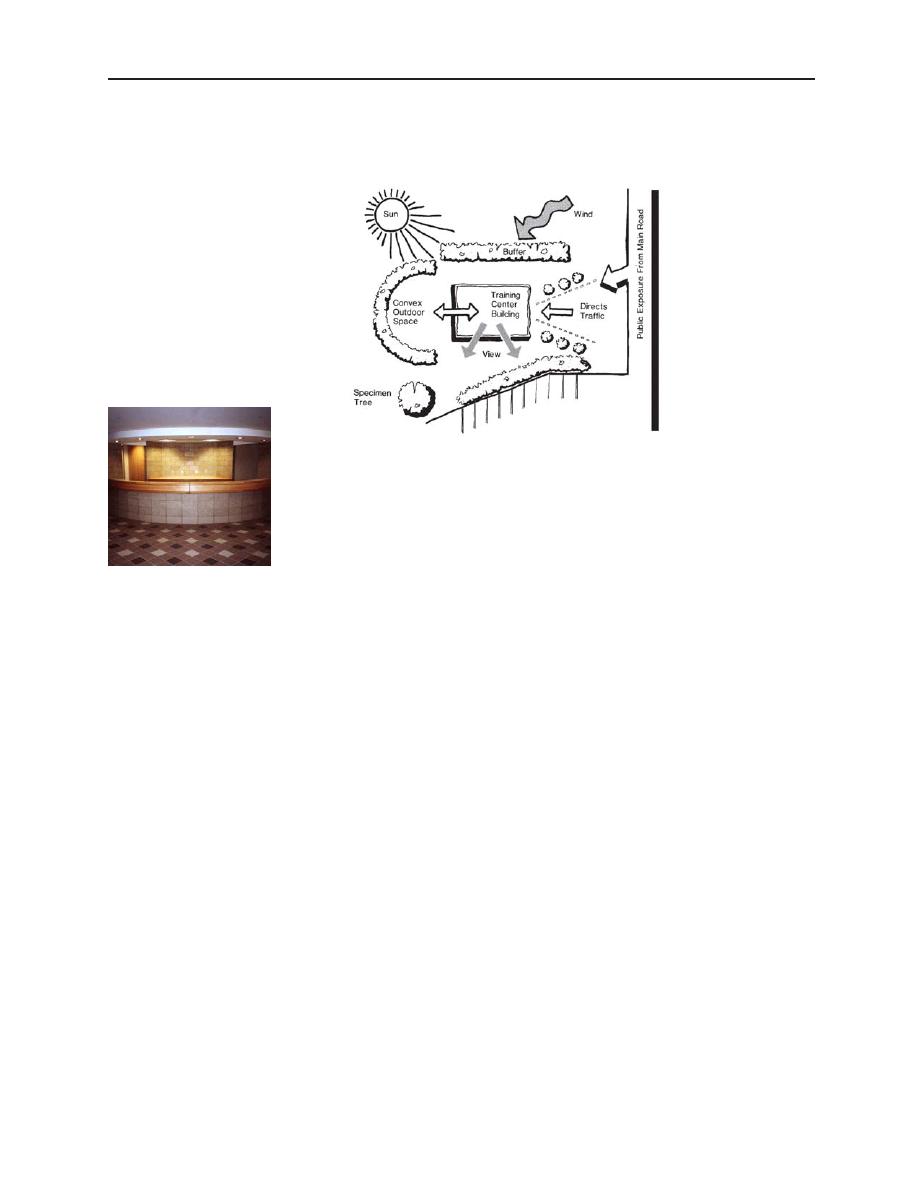
33
2.6.6 Plant materials provide focus and reinforce positive views.
Proper landscape treatment can screen unsightly structural elements
and buffer poor visual panoramas.
Figure 2-7 Landscape Planning
2.6.7 Quality, usable outdoor spaces are created through an
understanding of existing conditions, programmatic needs and well-
developed landscape architectural concepts. Landscape design and
the selection of materials must reflect the mission of the facility and
Tenants' needs. Planting must be functionally and esthetically
Figure 2-8
appropriate and reflect aspects of safety and security as outlined in
ARRTC VOQ,
the Department of Defense Antiterrorism/Force Protection
Ft. McCoy,
Standards.
Wisconsin
2.6.8 Plant material selection will afford permanent, low
maintenance appropriate to the facility's location. Vegetation must
be able to be maintained with a minimum effort, be vandal resistant,
hardy and disease resistant. The use of drought tolerant, indigenous
vegetation that incorporates aspects of sustainability is strongly
encouraged.
2.6.9 Trees, shrubs and groundcovers must be hardy to the region
in which the facility is located and must be horticulturally
appropriate to the sitespecific location in which they are planted.
Consideration should be given to adjacent structures and
improvements such that the landscaping does not adversely impact
them. On some Government installations, the Department of Public
Works (DPW) may have a list of preferred plant materials.
2.6.10 Trees and shrubs should be carefully selected to prevent
clogged gutters and drains by leaves and blocked sewer lines due to
root damage.
UFC 4-171-05



 Previous Page
Previous Page
